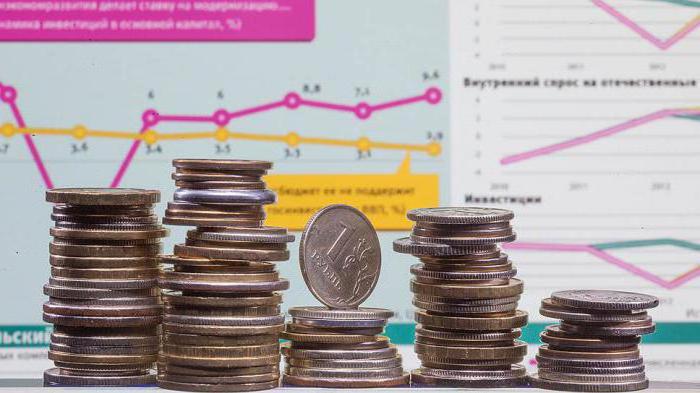It is common for people and governments to make savings. The motivation and forms of this phenomenon may be different, but they are a very important economic factor. Therefore, questions about the savings rate, the effective form of savings and their diversification always remain relevant.

Concept of savings
A sane person understands that it is necessary to have a certain financial reserve for an unforeseen event. This understanding leads people to save money. So there are savings. Savings are deferred consumption. A person or organization does not spend resources at the moment, but collects funds to spend them in a specific situation. The motivation for saving is usually the following four factors:
- Precaution. In this case, the person or state seeks to insure against cases of force majeure, a decrease in income or an increase in expenses.
- Ensuring old age and disability. For many people, this is the main motive for accumulating savings. The volume of these deferred funds is affected by the general economic situation in the state, a person’s confidence in the fate of their “hard-earned”, life expectancy in the state.
- Accumulation for the purpose of inheritance. Upon reaching a certain level of well-being, a person can begin to think about the material support of their descendants, which leads to the need to continue to save money even after retirement.
- Deferred demand. To make large purchases, a person is ready to save money, refusing some consumption today.
Savings - an important economic phenomenon that is associated with a whole chain of tools and phenomena in the economy.

The role of savings in the economy
The accumulation of savings is an important economic phenomenon, here the interests of the population, the state and organizations that provide various services for servicing the accumulated resources converge. Savings are the most important indicator of the real standard of living of the population in the country, and they also represent a powerful investment resource that can influence the economic development of the state. Accumulation of citizens can be a source of investment and lending to economic activities of economic entities. As a result of the conversion of these funds into investments, there is an influx of finance into the economy, which revitalizes it and creates additional incentives for growth. Therefore, it is important that the population trust their money to financial institutions, and not store resources at home. Serving the savings of citizens is the main activity of a number of organizations, their work as a whole favorably affects the activity of the economy.
Savings funds
The forms of savings can be different, as well as the means. What is this about? A means of savings is an established equivalent value that is saved for subsequent exchange for goods and services. The most common option is money. But accumulation of savings is also possible in such generally accepted means as precious metals and stones, real estate, investment coins, securities and other financial instruments, and objects of art. The means of accumulation can be, in fact, any material objects with liquidity. However, this raises the question of maintaining the value of the instrument. For example, during periods of high inflation, money can become an unprofitable means of accumulation.Or, for example, the price of precious metals can fall dramatically when a new large deposit of this metal is discovered.

Savings rate
The concepts of “savings rate”, “accumulation rate” can be considered in two aspects:
1. Microeconomic, that is, within the framework of one household. In this case, the rate of accumulation is the saved part of income in relation to all income received by the family.
2. The macroeconomic approach defines the rate of accumulation as part of investments in the country's gross domestic product. This is a marker that signals the state of the economy. The higher the savings rate, the better the state of the economy.
Also, the concept of “rate of accumulation” is used in the framework of the distribution of income of enterprises of various ownership forms. Depending on various factors, it can vary from 10 to 40% of the total income of a family, enterprise, country. It is affected by the size of the interest rate of the loan in the country, the volume of national profits, tax policy, the rate of income within the national economy or the total amount of savings of the population. For an individual household, the savings rate is determined based on both external and macroeconomic factors, as well as internal, for example, goals. So, in weak economies with unfavorable forecasts, there is usually a tendency to lower savings rates, and vice versa, in stable states people save money more easily.

Ways to accumulate savings: concept and types
Almost any person sooner or later begins to think about investments, such decisions are not characteristic only of the poorest countries and people. And then the question arises of how and what is the best way to keep money. There are several ways to make savings. Traditionally, they are divided into monetary and non-monetary (for example, the accumulation of savings in deposits and securities). Each of these species has its own specifics. They also distinguish ways of accumulation by the periods of preservation of funds: long-term, medium-term and short-term. For example, real estate and securities, it makes no sense to buy for quick turnover.
Cash Savings
Most often, savings are accumulated in cash. The advantage of this method is that the owner retains his purchasing power, can return the funds relatively quickly, and general financial knowledge is usually enough to conduct accumulation operations. Savings include the accumulation of national currencies, metal coins, as well as the use of financial institutions. The most common types of cash accumulation are:
- cash (in national or other currencies);
- bank deposits (these include savings accounts, time deposits and deposits).
The disadvantage of this method of saving is its great dependence on the economic system. Thus, rising inflation may destroy all deposit returns. Also a disadvantage of this method is the low return on investment, since no financial institution can offer large interest.

Non-monetary ways of saving
In this case, the population will require special knowledge and skills or the help of an intermediary (broker). In the non-cash savings market, risks are much higher, but profitability can be very high. These forms include such methods of savings:
- Pension and insurance funds are a way of long-term storage of funds with highly deferred consumption.
- The accumulation of savings in deposits and securities is the use of special tools, which often yield very high returns. But such investments can be very risky.
- Precious metals and stones - this method is associated with the difficulty of catching market conditions but investing can bring big returns.
- The property. Such investments can be profitable, but profits can usually be obtained in a long time.This method is associated with difficulties in returning investments, since an apartment, for example, is difficult to sell quickly and profitably. Due to such a long turnover, investment in real estate is not just a savings, but rather an investment.

Savings and Investments
The terms “accumulation”, “savings”, “investments” are often used as synonyms, although there are differences between them. Accumulations are usually called monetary and non-monetary assets, savings are exactly money, and investments are investments in any economic projects with the goal of making a profit. The difference between investments and savings are as follows:
- Savings are usually “short” money, that is, they can be quickly withdrawn from circulation, and investments, on the contrary, are “long” money, because You can return them only after making a profit.
- Savings usually bring guaranteed profits (if these are deposits in a financial institution), in the case of investments, there are usually no guarantees and cannot be.
- Savings do not require much effort from the investor, but investments need to be planned, calculated, and this is a serious and risky job.
Personal savings
When it comes to individuals and their money, this refers to personal savings or personal savings of citizens. This is explained by the fact that it is the population that is the main source of accumulation in financial organizations. Entrepreneurs are usually investors. Skills and education do not allow many people to manage their savings, so they are satisfied with a small but guaranteed income and carry money to banks. Specialists recommend diversifying personal savings and investing them in different instruments: pension funds, banks, stocks, in order to receive different income and take less risk. Postponing financiers advised at least 10% total income and a person should always have a minimum supply of funds so that he can live with a loss of source of profit for at least 6 months.
The problem of saving savings
When it comes to accumulating savings, the risk problem immediately arises. The least dangerous way is to place money in a bank, although there still remains the risk of losing deposits, but it is insignificant. It is necessary to distribute your hard-earned money in several banks so as not to exceed the amount guaranteed by the state. Much more serious are inflationary risks, which can minimize or even destroy the profit from investments. Therefore, often people think about investments. But in this case, the risks increase significantly. Can To invest money in real estate, but there is no guarantee that after some time it will not fall in price, the same applies to securities, precious metals. When choosing a place of investment, you must always consult with specialists to avoid unreasonable risks.

